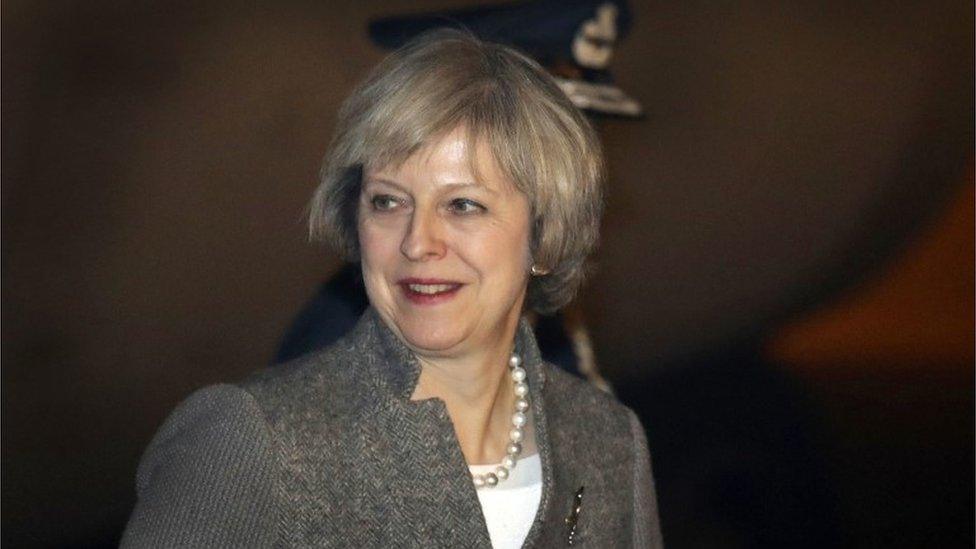Reality Check: How do students affect migration stats?
- Published
![Lord Bilimoria saying: We need to immediately get... Theresa May [to] say, 'we're no longer going to include international students within the net migration figures'](https://ichef.bbci.co.uk/ace/standard/976/cpsprodpb/B1A8/production/_92308454_bilimoria_quote.gif)
As Prime Minister Theresa May leads a trade mission to India, there has been discussion about how students are treated in migration figures.
Cobra Beer founder Lord Bilimoria told BBC News: "We need to immediately get the government, Theresa May, on this visit to announce and say 'we're no longer going to include international students within the net migration figures'."
Students are currently included in the official net migration figures that are estimated by the Office for National Statistics.
It published a document earlier this year, external about the treatment of students in the statistics.
The net migration figures are based on the International Passenger Survey, which asks people at UK ports whether they are planning to stay or leave for at least 12 months.
Including students is standard practice. If all the international students who came to study for more than a year left again at the end of their courses then, over time, they would have no impact on net migration figures. If the way the figures are collected was perfect (which it is not - it is a survey) then they would be counted in at the start of their courses and counted out at the end of them.
Removing students from the net migration figures would reduce them considerably for three or four years, but have no impact after that.
But the reason that the statisticians keep students in the net migration figures is that there is a gap between the numbers arriving and the numbers leaving.
In the year to the end of June 2015, 184,000 students came to the UK planning to stay for at least a year, while 57,000 students who had started courses in previous years left.
The ONS said that gap had been fairly consistent since 2012, when it started collecting figures in this way.
That gap makes a big difference to the net migration figures, external - it's a gap of 127,000 a period when total net migration to the UK was 336,000.
Some of this gap could be down to the imperfections in the International Passenger Survey, which is a big survey, interviewing 700,000 to 800,000 people a year, but is still a survey and hence only an estimate.
And there are particular problems with sampling students, for example, somebody doing a master's degree may say on arrival that they are planning to stay for a year but then leave after 11 months, meaning that they would be counted as a long-term migrant as they arrived but not as they left.
Some of the gap will be down to people who have extended their visas or obtained new ones, having started new courses or found skilled work, for example.
And there will be people who have finished their courses and outstayed their visas.
To get an idea of how many people are extending their student visas, the Home Office says that in 2014, 75,000 people were granted an extension of stay in the UK to study, of whom 12,000 had previously been on non-study visas. That figure for extensions was relatively low, having averaged 127,000 over the previous three years.
Lord Bilimoria said restrictions on staying in the UK after their studies meant the number of Indians attending UK universities had halved in the past five years.
It has actually fallen by more than that, with 68,238 study visas issued to Indian nationals in the year to June 2010, falling to 11,864 five years later, according to official figures., external
The rules have indeed been tightened, with students from outside the EU wanting to extend their study visas, for example, having to do so from outside the UK and visas no longer allowing students to seek work in the UK after graduation.
Nonetheless, over that same period, the number of students coming from China to the UK rose from 39,695 to 68,294.



- Published7 November 2016

- Published7 December 2010